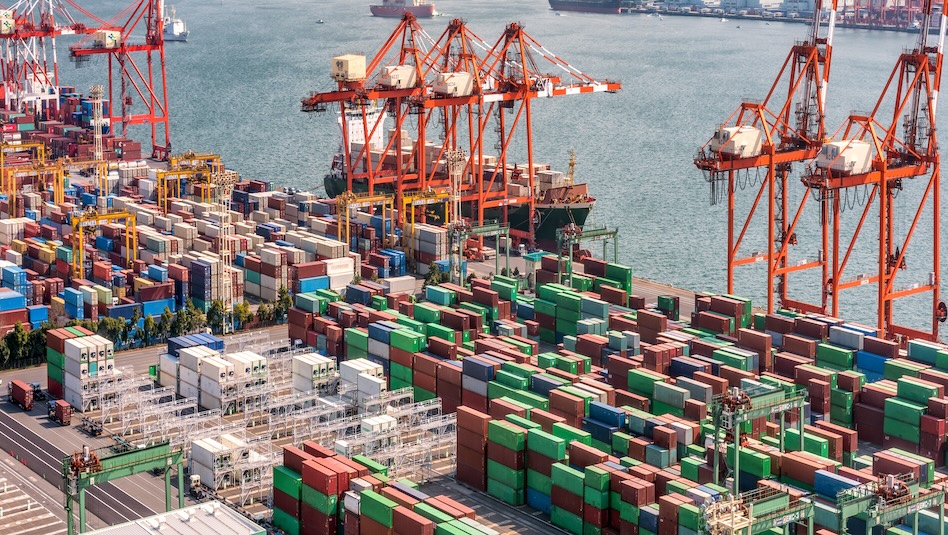




Monthly Economic Update: One for the road
 DOWNLOAD
DOWNLOAD

Inflation Update: Still low, still slow
 DOWNLOAD
DOWNLOAD

Philippines Trade Update: Exports momentum continues
 DOWNLOAD
DOWNLOAD


Q1 GDP growth slowest in 2 years


THE PHILIPPINE ECONOMY grew by 6.4% in the first quarter, the slowest in two years as elevated inflation and rising interest rates dampened consumer spending, the statistics agency said on Thursday.
Preliminary data from the Philippine Statistics Authority (PSA) showed that gross domestic product (GDP) expanded by 6.4% in the January-to-March period, slower than the revised 7.1% growth in the previous quarter, and the 8% expansion in the first quarter of 2022.
It exceeded the median estimate of 6.1% GDP growth in a BusinessWorld poll of 23 economists and settled within the government’s 6-7% target for the year.
“This was the lowest growth registered after seven quarters when the country started to recover from the pandemic in the second quarter of 2021 (when GDP grew 12%),” National Statistician Claire Dennis S. Mapa said at a press conference in Quezon City on Thursday.
However, the latest GDP print was the slowest in eight quarters or since the 3.8% contraction in the first quarter of 2021.
On a seasonally adjusted quarter-on-quarter basis, GDP growth slowed to 1.1% from the 2% growth in the previous quarter.
National Economic and Development Authority (NEDA) Secretary Arsenio M. Balisacan said that while first-quarter growth was slower year on year, it should not be interpreted as a slowdown.
“Rather, the economy is normalizing its previous trend. The better-than-expected first-quarter performance this year implies that we are returning to our high-growth trajectory despite the various challenges and headwinds we have faced,” he said at the same briefing.
Mr. Balisacan noted the Philippines’ economic growth was the highest among Southeast Asian countries that have already released first-quarter GDP data. The Philippines is ahead of Indonesia (5%), China (4.5%), and Vietnam (3.3%).
Consumer spending
Household final consumption, which contributes around three-fourths to GDP, grew by 6.3% in the first quarter. However, this was slower than the 7% growth in the previous quarter, and 10% a year earlier.
Mr. Balisacan said persistent inflation and tighter monetary conditions impacted growth in the first quarter.
“One cannot discount that the slowdown that we have seen in the first quarter is partly the effect of high inflation… When the prices are high, there’s less (consumer) demand, then that obviously is reflected in the economy,” he said.
Inflation accelerated to a 14-year high of 8.7% in January before easing to 8.6% in February and 7.6% in March. Inflation averaged 8.3% in the first quarter, still well above the Bangko Sentral ng Pilipinas’ (BSP) 2-4% target range and 6% full-year forecast.
Since May 2022, the Bangko Sentral ng Pilipinas (BSP) has raised rates by 425 basis points to combat inflation. This brought the key policy rate to a near 16-year high of 6.25%.
“High inflation remains a challenge, the BSP’s move to raise its key policy rates to anchor inflation expectations and ensure price stability, may dampen future growth. But the improvement in the business climate can counter this unintended effect,” he added.
The NEDA secretary said expectations that inflation will return to the 2-4% target band by the end of the year could rebuild consumer and business confidence, which would boost spending and investments.
“This slowdown, if you want to call it, it’s just a temporary thing. I think this favorable investment climate that will come out as a result of the decreased inflation will more than outweigh any residual effects of the past increases in interest rates,” he said.
Meanwhile, government expenditure growth rose to 6.2%, faster than the 3.5% in the first quarter last year and 3.3% in the fourth quarter.
“This (reflects) a robust public construction performance primarily driven by the road infrastructure and railway projects of the Department of Public Works and Highways and the Department of Transportation,” Mr. Balisacan said.
Gross capital formation, the investment component of the economy, jumped 12.2% from 3.8% in the fourth quarter. However, this was slower than the 17.7% growth in the first quarter of 2022.
Among major industries, services rose by 8.38% in the first quarter, easing from 8.42% in the same quarter of 2022 and 9.8% in the previous quarter.
“Services had the biggest contribution to growth, at five percentage points, followed by industry at 1.2 points and agriculture at 0.2 point,” Mr. Mapa said.
Industry growth eased to 3.9% from 10% a year ago, while agriculture expanded by 2.2% from 0.2% a year ago.
“Agriculture’s performance this quarter — primarily due to favorable weather conditions — is a promising beginning to 2023, especially given the expected challenge of El Niño later in the year,” Mr. Balisacan said.
Net primary income from the rest of the world was 81.2%, lower than the 102.7% in the first quarter of 2022 but better than the 59.9% in the previous quarter.
Gross national income — the sum of the nation’s GDP and net income received from overseas — rose by 9.9%, slightly lower than the 10.5% a year ago, but higher than the 9.3% in the fourth quarter.
On track
In order to achieve the lower end of the government’s 6-7% target, Mr. Balisacan said that the next three quarters must grow by an average of 5.9%.
GDP growth should average 7.2% in the next three quarters to meet the upper end of the target, he added.
“Looking at what’s driving the growth, we do think that’s still very much doable,” the NEDA secretary said.
However, Mr. Balisacan flagged several risks to the growth outlook, including the looming El Niño weather phenomenon.
The state weather bureau said El Niño may emerge in the next three months at an 80% probability and may persist until the first quarter of 2024. This would increase the likelihood of below-normal rainfall conditions, which could bring dry spells and drought in some areas.
“The El Niño can affect the economy in different ways, the most obvious one is on the production side, especially agriculture… During the strong El Niño years, rice production could decrease by double digits. Even a slight El Niño could cause agricultural production to decrease by 1-2%,” Mr. Balisacan said.
Since agriculture only accounts for 10% of GDP, he said El Niño “may not deeply impact the economy.”
El Niño can also impact the supply of electricity, particularly dams and power plants that are dependent on water, Mr. Balisacan said.
The country’s last episode of El Niño was in 2019. In the first quarter of 2019, GDP grew by 5.6%.
Outlook
ING Bank N.V. Manila Senior Economist Nicholas Antonio T. Mapa said first-quarter growth was faster than most had anticipated but 6.4% print could be the highest for the year.
“We expect GDP to remain in expansion mode for the rest of the year, although we are bracing for a likely slowdown as the triple threat of high inflation, elevated borrowing costs and rising debt levels weigh on momentum,” he said in a note.
ING’s Mr. Mapa said pent-up demand from the economic reopening “will be completely washed out by the second quarter.”
“Challenges are also mounting across sectors with the agricultural sector facing an El Niño episode, which could also take down with it a substantial part of the Philippine manufacturing sector given the sizable contribution of food manufacturers,” he added.
Capital Economics Senior Asia Economist Gareth Leather said the Philippine economy is expected to further weaken in the next quarters amid elevated interest rates and weak global demand.
Mr. Leather said exports are “likely to remain subdued” and consumer spending will “slow further over the coming quarters.”
“The lagged impact of monetary tightening will curtail private consumption growth in the coming quarters. Furthermore, the central bank’s index on consumer sentiment remains firmly in negative territory,” he added.
Both Mr. Mapa and Mr. Leather expect GDP growth of 5.5% this year.
Pantheon Chief Emerging Asia Economist Miguel Chanco said that the economy “clearly lost more momentum at the start of this year,” citing slowing exports and household consumption.
Despite global headwinds, Robert Dan J. Roces, chief economist at Security Bank Corp., said the Philippines is likely to “remain a standout performer in the region,” citing robust household spending and investments as drivers of growth.
Mr. Roces also said that slower first-quarter growth may give room for the BSP to pause its tightening cycle.
“The first-quarter GDP data, coupled with signs of cooling price pressures, may encourage the central bank to consider a more cautious stance on further tightening measures, potentially leading to a pause of interest rate hikes,” he said in a Viber message.
“With inflation on the downtrend and growth showing signs of slowing, we believe this opens the door for BSP Governor Felipe M. Medalla to pause and keep policy rates at 6.25%,” Mr. Mapa added.
The Monetary Board is set to meet on May 18. — By Luisa Maria Jacinta C. Jocson, Reporter
This article originally appeared on bworldonline.com





 By BusinessWorld
By BusinessWorld
